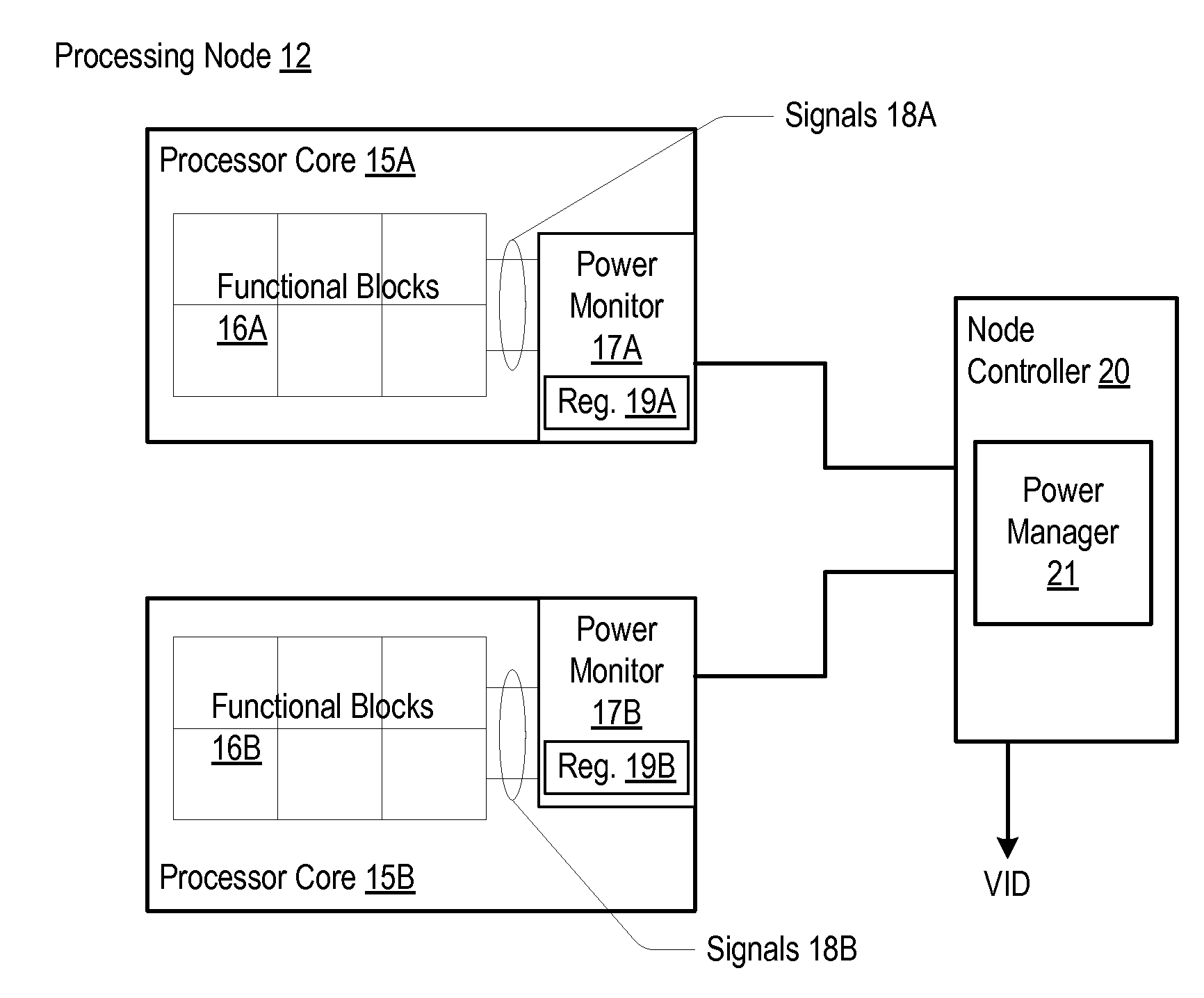Method of determining event based energy weights for digital power estimation
a technology of power estimation and event, applied in the field of power usage estimation in the microprocessor, can solve the problems of generating a significant amount of heat, consuming a great deal of power, and causing catastrophic damage to the processor, and achieve the effect of accurate power consumption estimation
- Summary
- Abstract
- Description
- Claims
- Application Information
AI Technical Summary
Benefits of technology
Problems solved by technology
Method used
Image
Examples
Embodiment Construction
[0016]Turning now to FIG. 1, a simplified block diagram of one embodiment of a processing node is shown. In the illustrated embodiment, the processing node 12 includes processor cores 15A-15B coupled to a node controller 20. In one embodiment, node 12 may be a single integrated circuit chip comprising the circuitry shown therein in FIG. 1. That is, node 12 may be a chip multiprocessor (CMP). Other embodiments may implement the node 12 as two or more separate integrated circuits, as desired. Any level of integration or discrete components may be used. It is noted that components having a number and a letter as a reference designator may be referred to by the number only where appropriate.
[0017]It is also noted that, a processing node such as node 12 may include any number of processor cores, in various embodiments. It is further noted that processor node 12 may include many other components that have been omitted here for simplicity. For example, in various embodiments processing nod...
PUM
 Login to View More
Login to View More Abstract
Description
Claims
Application Information
 Login to View More
Login to View More - R&D
- Intellectual Property
- Life Sciences
- Materials
- Tech Scout
- Unparalleled Data Quality
- Higher Quality Content
- 60% Fewer Hallucinations
Browse by: Latest US Patents, China's latest patents, Technical Efficacy Thesaurus, Application Domain, Technology Topic, Popular Technical Reports.
© 2025 PatSnap. All rights reserved.Legal|Privacy policy|Modern Slavery Act Transparency Statement|Sitemap|About US| Contact US: help@patsnap.com



